We use it multiple times a day without even realizing it—to bathe, to drink, to cook, to swim, yet there are some people that wonder when or if they will even get enough of it to keep them alive. Or even worse, when they do have access to it, wonder if it’s safe. If you haven’t already guessed what I’m referring too, it’s water.
In North America, we are privileged. We live with clean and safe drinking water every day. In many ways, we take advantage of this. We take long hot showers, leave the water running when we brush our teeth, and we even dump a glass of perfectly good water out just so we can get a fresh and cold glass of it. We do this without even thinking twice, because likely we have grown up in a country that we didn’t have to.
But when you have easy access to something, it’s easy to take it for granted; it’s easy to forget that not everywhere in the world is as fortunate as us. It’s even harder to imagine that in 2016, something as critical as water is still not available to everyone.
The statistics around the world water crisis are frightening. One in ten people in the world lack access to safe drinking water, and one in every five deaths among children under the age of five is due to a water-related disease. Dominican Republic is one of the many countries that don’t have access to clean drinking water. One of my guides on my recent trip there, who seemed to come from amore privileged family, even told me his house only has access to water three days a week.
I traveled to Dominican Republic this past week with Fathom cruise lines, a new cruise line that caters to impact travel, and I had the opportunity to do my part in helping Dominican’s have easier access to clean drinking water through their water filtration project.
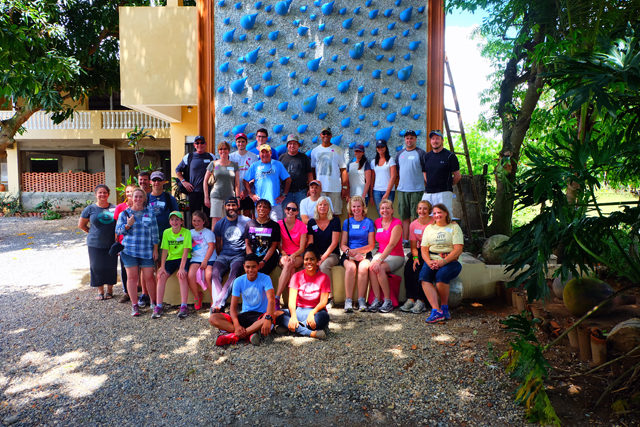
Fathom partners with on ground partner, Wine to Water which is a non-profit organization dedicated to providing clean drinking water to people across the globe, and one of their current projects is focusing on the Dominican Republic through their ceramic water factory. These filters are made from sawdust, clay and liquid silver, and can filter about 1 litre of water within an hour. This water can come from any source, and the filters help make it clean and drinkable.
Through Fathom’s partnership, their goal is to great 1,000 water filters within the first year which would help bring clean water to 5,000 people. In my visit alone, we made 29 water filters and delivered three water filters to families within the community that day.
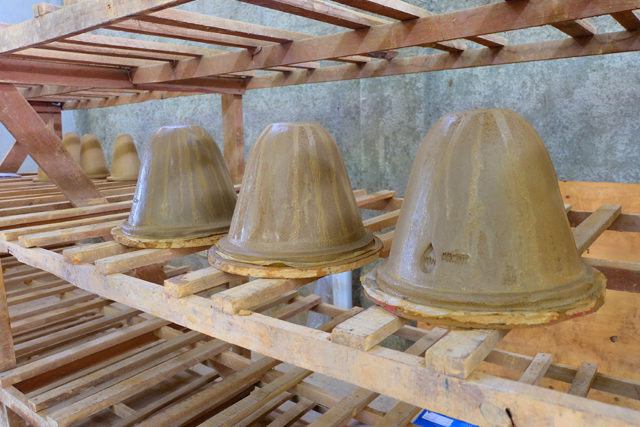
Wine to Water’s factory was approximately 90 minutes away from our port, Amber Cove. When we arrived, we were brought for a tour of the factory that walked us through the steps of creating the water filters, and then we were put to work to help increase production and help their small team develop more water filters than a usual day.
We were divided into groups of six or seven and took turns floating through the different stages of the process:
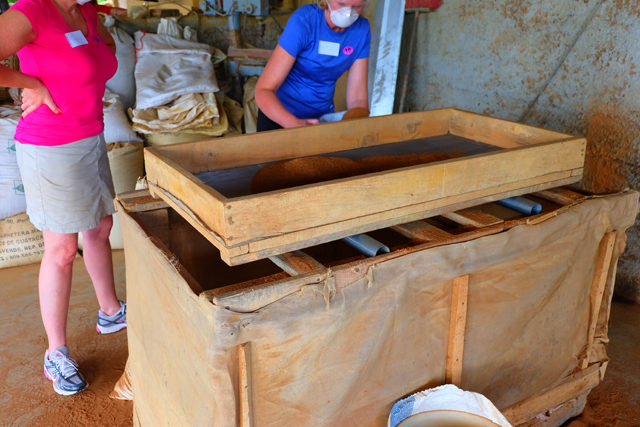
Step One: Sifting
This is the step in which the clay gets mixed and made. Clay gets ground or mixed and sawdust gets sifted to prepare it for the clay products.
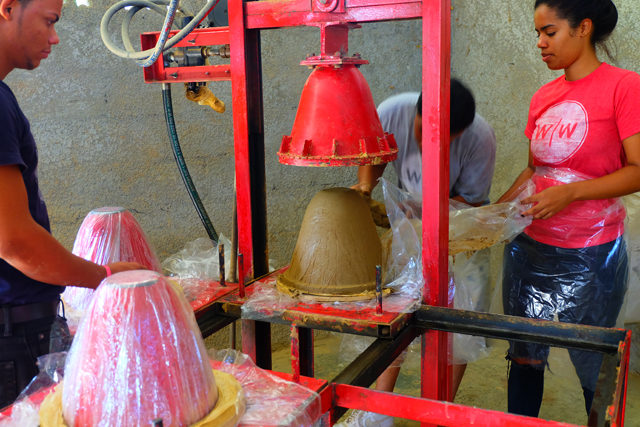
Step Two: Making the filter
My favourite stage! You start off by kneading the clay to form two balls in which you plop on top of one another. Next you drop (yes, literally throw down the clay balls) onto plastic on the floor to help flatten it, and then on top of plastic that is placed on the mold, you pile your clay on before the mold is pressed down to formulate the filter. Once it is pressed once, you take any extra clay from the rim and add it to the bottom of the filter to help avoid cracks. Your last step is to fill cracks with additional clay, and smooth it out with water and a blade. The filter than goes off to dry on the rack/shelf.
Step Three: The kiln
Depending on what’s needed of you that day, you’ll either be loading or unloading the kiln. Once the filters are done baking, they’ll be removed and each will be tested by knocking on the clay. They are looking for a special sound from the filter in order to know it is good.
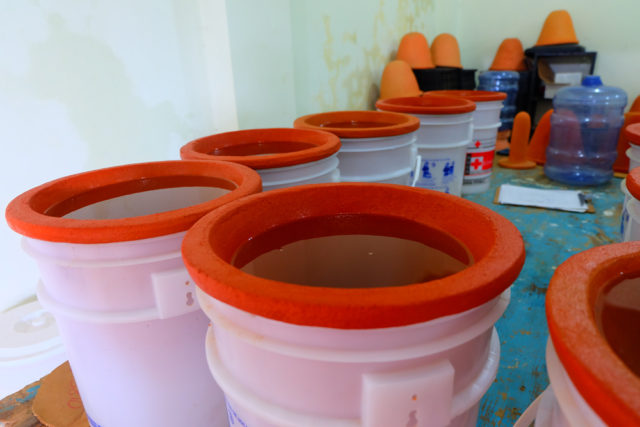
Step Four: Quality control
After the kiln, the filter will head to quality control where filters are taken from the back, middle and front of the kiln and tested for efficiency and quality. Bacteriological and flow tests will both be conducted. After this step, filters are packaged for distribution.
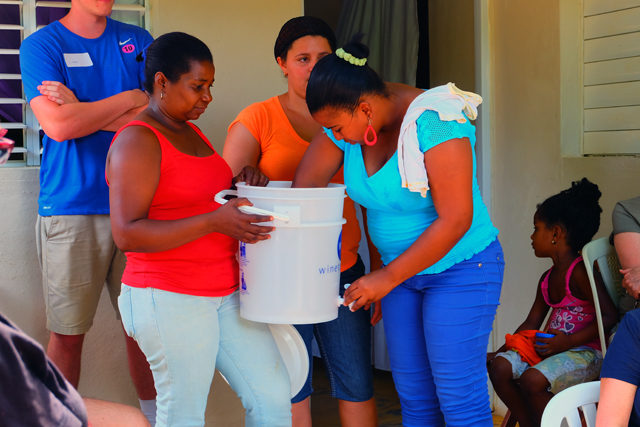
Step Five: Delivery
To end the day, we packed up three water filters and headed out for a five minute walk down the road to deliver these filters to three families. The locals are charged either a small fee ($2-$3 US) or a bargain is made such as a trade for coconuts or something they already have a lot of. The reason for this is to add value to the filter, and to ensure they take good care of it.
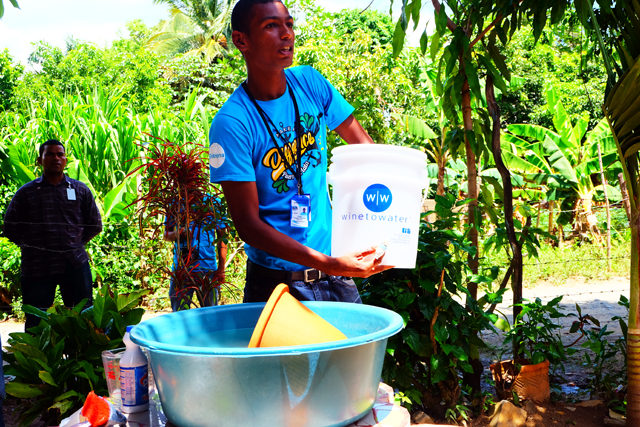
When we arrived at the house, the families were taught how to properly clean the filters, and how to use them. This ensures that the products are being used and cared for properly so they last the five years they are supposed to last. The Wine to Water team will regularly track and follow up with families to make sure the filters are working, and are being used properly.
The day was interesting, and gave me a look into what something as simple as a clay water filter can do for a family and community. I’ve been guilty of taking water for granted, and visiting Wine to Water really put my whole life into perspective, and reminded me just how lucky I really am to have something that seems so simple to most of us, water.
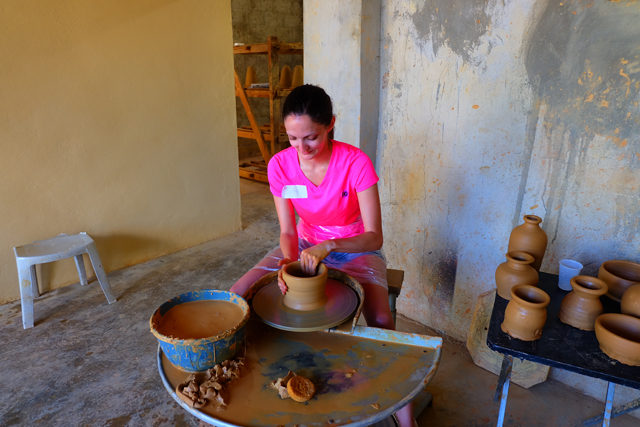
We even got to try our hand at pottery making after all our hard work!
I was so happy I got to experience this impact activity on my Fathom cruise, and since they only take around 30 people on this activity each day, if you are on one of their cruises, make sure to sign up early to get to experience it. Wine to Water is also based out of the USA and has several different ways you can get involved with their organization, including wine events, and several local chapters to be a part of. To learn more about how you can help, click here. And do everyone a favour, and be more conscious about the water you use everyday and appreciate it!

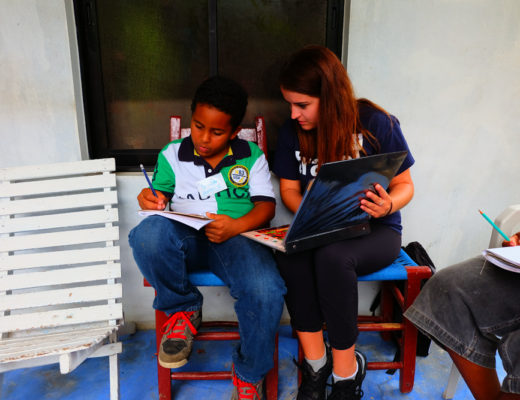
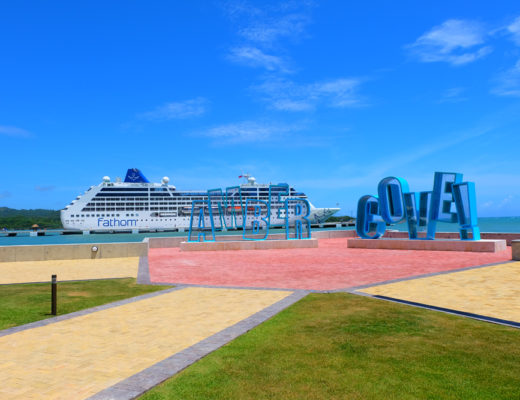
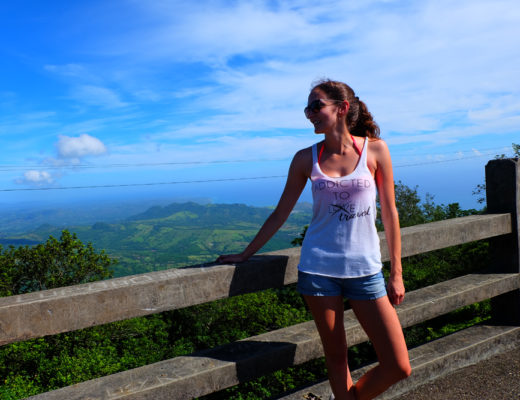

No Comments